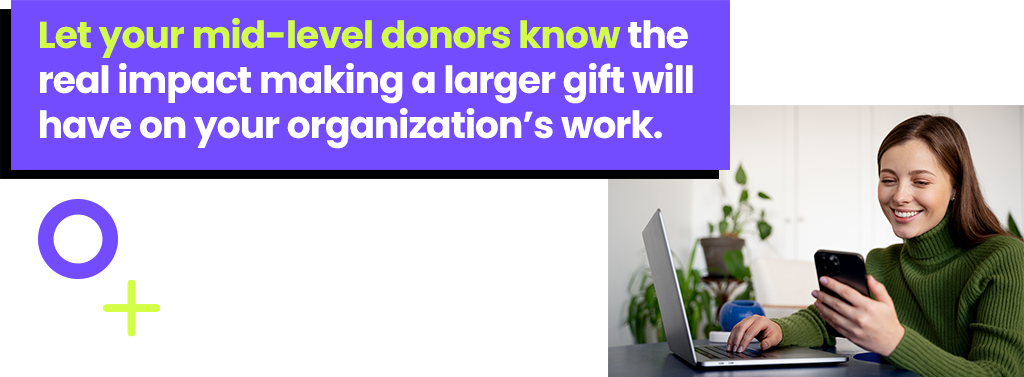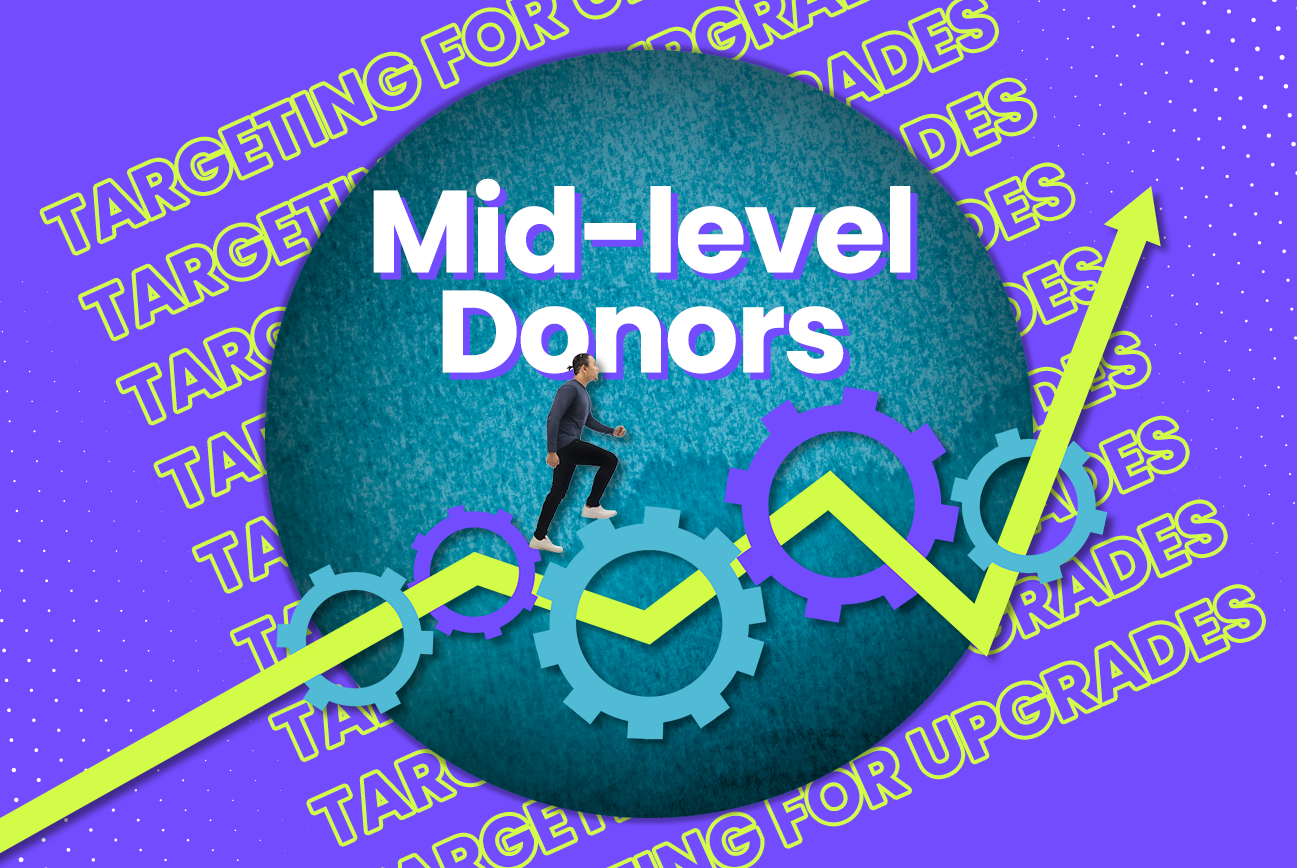Let’s cut to the chase. Too many organizations don’t put enough thought into how they engage mid-level donors.
If you’re like other fundraisers, most of your nonprofit’s strategy is probably focused on acquiring new donors and locking in high-level contributors for the long haul. While concentrating on your outreach for these groups seems to make a lot of sense, you can’t forget about another very important segment: your mid-level donors.
Any organization that fails to target this group is selling themselves short. Mid-level donors may only account for 5 to 10 percent of a nonprofit’s donor base. But they can make up 40 to 50 percent of your total revenue.
Who are your mid-level donors?
This answer is different for every organization. So, you need to dig through your database to find out!
Mid-level donors give more than the largest average donor but less than your smallest major donor. You will need to analyze all the donations you have received in the past 6 to 12 months and identify where to draw the lines between giving levels.
For example, you may have many donors who give less than $500. But you might also notice several larger donations over $2,000. In this scenario, a donor who gives somewhere in between would be considered a mid-level donor.
READ MORE: How nonprofits use donor data to raise more money.

Focus on donors who are likely to upgrade.
Nonprofits should look at their mid-level donors as a bridge between base-level donors and major givers. After all, the end game is to move current mid-level donors into your major donor ranks.
Aside from the amount they give, your data can tell you what makes your mid-level donors unique.
And it can help you identify similarities and differences between your mid and high-level donors, so you can get a better idea of who is most likely to increase their gift amount. So, it’s time to ask yourself some questions and then find the answers in your data.
For example, do your major donors work in similar industries or live in a specific area?
It’s important to look at psychographic information, like opinions, interests, and lifestyle, as well as audience demographics.
Then, use what you learn to create a targeted audience and build a communications strategy that encourages these recipients to join your leadership ranks.
The data you already have will be helpful. But consider picking up the phone and asking mid-level donors why they gave the amount they did outright.
Or ask them what would inspire them to make a larger donation next time. Then, use what you learn to encourage other donors to increase their gift amount for your next appeal.
READ MORE: Applying data-driven ask strings in your appeals.

We need your help!
Once you’ve determined who to target, you should develop a strategy to push those donors to give at a higher level.
So, remember to be donor-centric in your outreach!
Your communications should focus on what these donors can accomplish by increasing their support. Let them know the real impact making a larger gift will have on your organization’s goals.
And, of course, don’t forget to be personal and thank them for their past support. Consider something like, “Mary, you helped us change the lives of underserved students with your last $100 donation. But we still need your help! I want to tell you how you can further your impact by increasing your support today.”
READ MORE: An exercise that will amplifi your next appeal letter.
About the ask.
You can use a more direct approach and be specific with your ask with mid-level donors. Don’t be shy about asking them to do more for the cause!
Try using “I want to increase my gift to: _$_____” in your ask string. Or, instead of an open ask, use a three-ask string with their last donation as the lowest value ask.
This is especially powerful if the organization has specific benefits for becoming a leadership donor. Your current mid-level donors may not know about these perks. So, let them know what they’re missing.
It’s also important to meet donors where they are most comfortable. Reaching out through both direct mail and email allows you to engage donors in the way they prefer. And it helps you go surround sound with your outreach.
If you send a direct mailer a week after an email appeal, you may see a spike in online gifts. In many cases, your print appeal is a great reminder for donors who opened your email but didn’t follow through with a gift.
This is also your chance to make your mid-level donors feel special with insider information you may not share with your entire donor base.
Oh, and don’t forget to go above and beyond with your thank you’s when someone increases their support and joins your major donor ranks.
READ MORE: Direct mail fundraising can help you go surround sound.

Did we do a good job?
Remember, your mid-level donor program should serve as a bridge between your lower-level contributors and major donors. The goal is to encourage these mid-level donors to take the next step and join your high-level gift-givers.
There are two key metrics to examine when determining the success of your mid-level donor program.
First, look at your long-term giving history and calculate how many mid-level donors have graduated to the major donor level. You don’t have to convert everyone, but you will see a significant impact on revenue for each donor that moves into the high-level classification.
Second, you should determine your mid-level donor retention rate. Nonprofits with a thorough and effective outreach plan for mid-level donors should retain this group at a higher rate than their average donors.
READ MORE: Why are you struggling to retain donors?
A lesson on loyalty.
Your nonprofit’s ability to retain donors greatly impacts annual revenue and how successful your organization will be in the long run.
Remember, it’s more expensive to acquire new donors than it is to retain the ones you already have. In fact, most nonprofits spend more money to acquire a new donor than they collect from a first-time donation.
It will take more than a simple thank you to convince donors to support your cause, stay with you for the long haul, and commit to a larger gift.
You need to make the donor feel like their contribution truly makes a difference and continue building your relationship with them after they donate. Then, target engaged donors who are most likely to increase their support and focus your outreach on moving these donors up to the next giving level.









